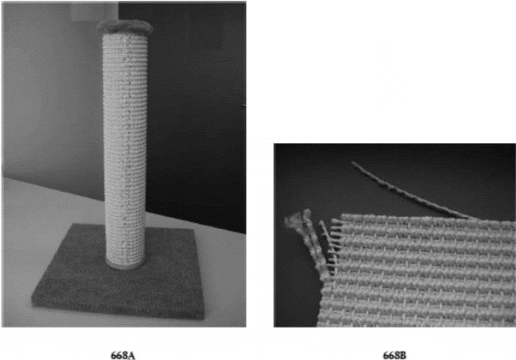
COMMISSION IMPLEMENTING REGULATION (EU) No 1229/2013of 28 November 2013 concerning the classification of certain goods in the Combined Nomenclature- "Official Journal of the European Union", No L 322/8 of 3.12.2013 - |
THE EUROPEAN COMMISSION,
Having regard to the Treaty on the Functioning of the European Union,
Having regard to Council Regulation (EEC) No 2658/87 of 23 July 1987 on the tariff and statistical nomenclature and on the Common Customs Tariff(1), and in particular Article 9(1)(a) thereof,
_________
(1) OJ L 256, 7.9.1987, p. 1.
Whereas:
(1) In order to ensure uniform application of the Combined Nomenclature annexed to Regulation (EEC) No 2658/87, it is necessary to adopt measures concerning the classification of the goods referred to in the Annex to this Regulation.
(2) Regulation (EEC) No 2658/87 has laid down the general rules for the interpretation of the Combined Nomenclature. Those rules apply also to any other nomenclature which is wholly or partly based on it or which adds any additional subdivision to it and which is established by specific provisions of the Union, with a view to the application of tariff and other measures relating to trade in goods.
(3) Pursuant to those general rules, the goods described in column (1) of the table set out in the Annex should be classified under the CN code indicated in column (2), by virtue of the reasons set out in column (3) of that table.
(4) It is appropriate to provide that binding tariff information issued in respect of the goods concerned by this Regulation which does not conform to this Regulation may continue to be invoked for a certain period by the holder in accordance with Article 12(6) of Council Regulation (EEC) No 2913/92(2). That period should be set at three months.
_________
(2) Council Regulation (EEC) No 2913/92 of 12 October 1992 establishing the Community Customs Code (OJ L 302, 19.10.1992, p. 1).
(5) The measures provided for in this Regulation are in accordance with the opinion of the Customs Code Committee,
HAS ADOPTED THIS REGULATION:
Article 1
The goods described in column (1) of the table set out in the Annex shall be classified within the Combined Nomenclature under the CN code indicated in column (2) of that table.
Article 2
Binding tariff information which does not conform to this Regulation may continue to be invoked in accordance with Article 12(6) of Regulation (EEC) No 2913/92 for a period of three months from the date of entry into force of this Regulation.
Article 3
This Regulation shall enter into force on the twentieth day following that of its publication in the Official Journal of the European Union.
This Regulation shall be binding in its entirety and directly applicable in all Member States.
Done at Brussels, 28 November 2013.
For the Commission,
On behalf of the President,
Algirdas ŠEMETA
Member of the Commission
ANNEX
Description of the goods |
Classification (CN-code) |
Reasons |
(1) |
(2) |
(3) |
Article consisting of a wooden platform (measuring approximately 40 to 40 cm) covered on the upper and edges with a felt lined woven fabric of synthetic fibres (polypropylene). The fabric has a backing of cellular plastic. The tube is covered with a sisal mat glued to it and fixed to it by staples. The sisal mat consists of a latex backing applied to a woven fabric of spun vegetable fibres of sisal (see photo no 668B). The spun strings of sisal fibres measure more than 20 000 decitex each. |
6307 90 98 |
Classification is determined by general rules 1, 3(b) and 6 for the interpretation of the Combined Nomenclature (GIR), note 7(f) to Section XI and the wording of CN code 6307, 6307 90 and 6307 90 98. Given its objective characteristics, the article is an article for cats and is designed to attract cats and to keep them away from furniture that they would otherwise scratch and occupy. Classification as toys under heading 9503 is also excluded because the article is identifiable as intended exclusively for animals and thus not covered by that heading in accordance with note 5 to Chapter 95. The textile material is essential to attract cats (e.g. to scratch their claws on it, sit on it and play with it) and consequently essential to the use of the article as a scratching and playing facility for cats. Thus, it is the textile material (not the wood, paperboard or plastic) that gives the article its essential character within the meaning of GIR 3(b). The sisal fibres of heading 5305 have been spun into twine of heading 5607 within the meaning of note 3 (A) (e) to Section XI of the CN (see also the HSEN to heading 5305, first paragraph, and the distinction between yarns and twine in table I, type: of other vegetable fibres, in the HSEN to Section XI, General, (1) (B) (2)). However, the woven sisal fabric cannot be classified in heading 5609 as an article of twine, because this heading does not cover textile articles covered by a more specific heading for textile fabrics such as heading 6307 (see also the HSEN to heading 5609, first paragraph and third paragraph, point (c)). Neither the sisal mat nor the felt lined woven fabric of synthetic fibres with its backing of cellular plastic can be classified in Chapter 57 within the meaning of note 1 to that Chapter as those materials are part of a cat scratcher and do not have a furnishing purpose (see also the HSEN to Chapter 57, General, first paragraph). Consequently, a made-up article consisting of woven sisal fabric, woven pile fabric, and felt lined woven fabric of synthetic fibres, should be classified under heading 6307. The article should therefore be classified under CN code 6307 90 98 as "other made-up textile articles". |
(*) The photographs are purely for information. |
||
